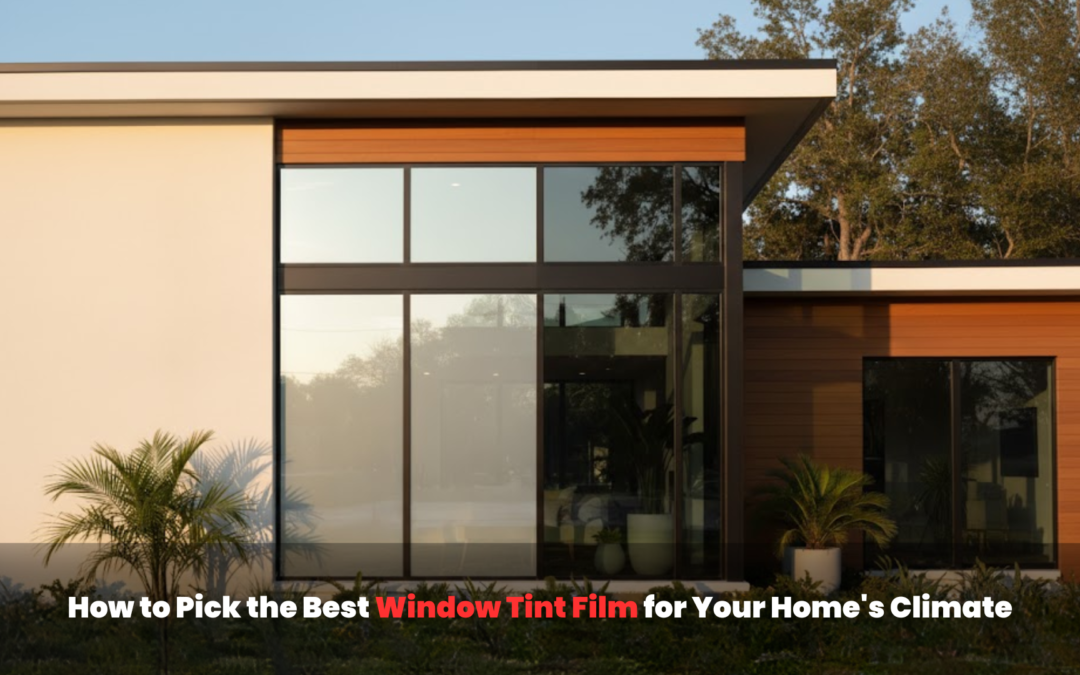Living in Jacksonville, we all know the deal. The heat isn’t just hot; it’s a relentless, humid, “oppressive” force (as the weather forecasters love to say). Our homes are our sanctuaries, but our windows often betray us, letting in that blazing sun, which drives up A/C bills, fades our furniture, and creates unbearable glare. You’ve correctly identified the solution: a high-quality window tint film. But this is where the journey gets complicated.
Choosing a film isn’t as simple as picking a dark, medium, or light shade. In a climate like ours, the wrong choice is worse than a waste of money; it’s a missed opportunity to truly solve your problem. As professionals who have been installing home window tint in the Jacksonville area for over 30 years, we’ve seen it all. We want to arm you with the expert knowledge you need to select the perfect film for your home, your climate, and your specific needs. This is your comprehensive guide.
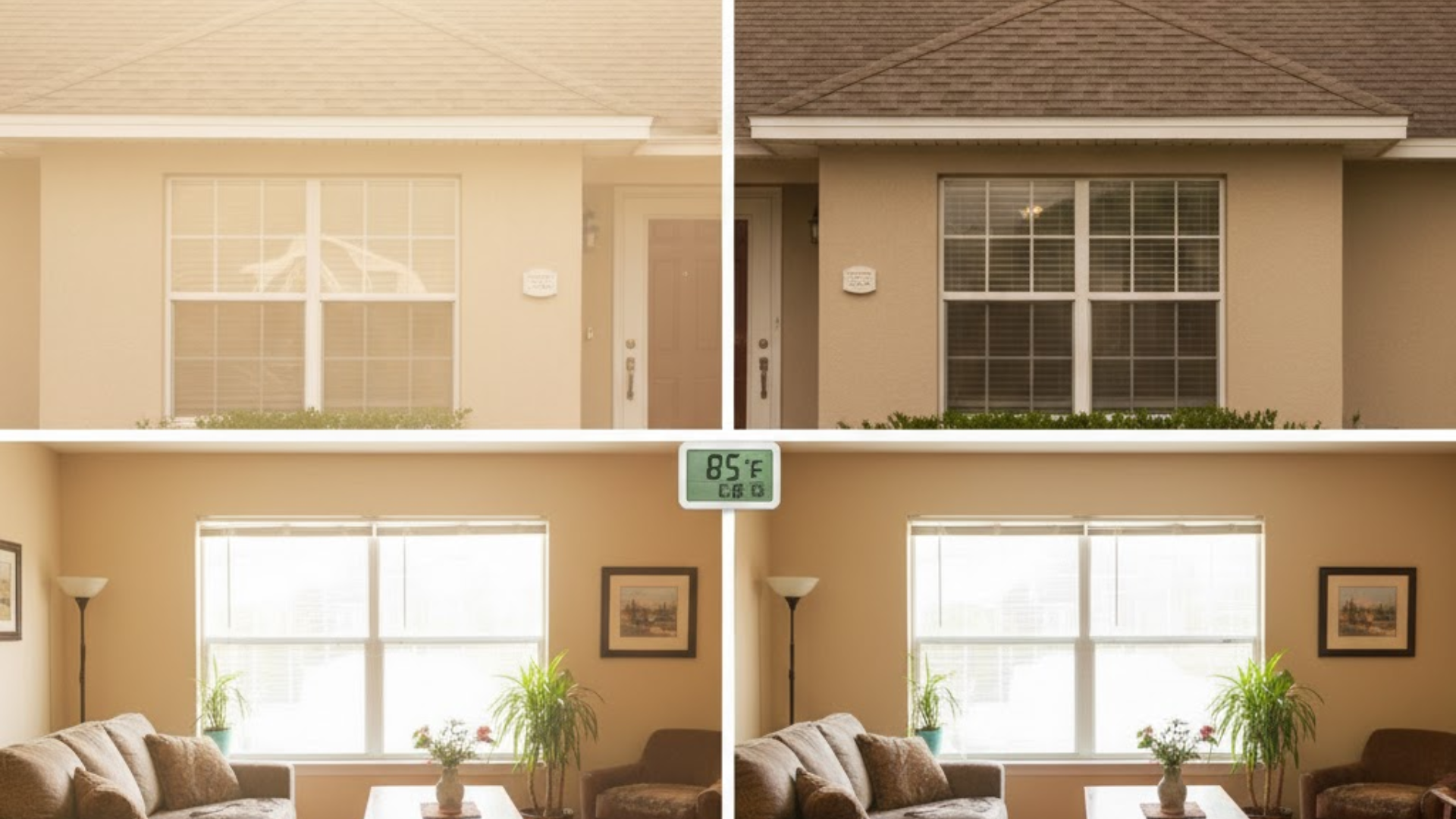
Understanding Your Home’s Climate (and Why It Matters)
Before you can pick the right film, you must have a deep respect for the problem. Here in Northeast Florida, we face a unique set of challenges that put an extreme demand on any house window tinting solution.

The Jacksonville Challenge: Heat, UV, and Glare
Our humid subtropical climate gives us long, sweltering summers and intense, year-round solar radiation. This creates three primary problems for homeowners:
- Excessive Heat GainUntreated windows are like giant, inefficient holes in your home’s insulation. In fact, windows can be responsible for up to 75% of the unwanted heat that gets into your home. This forces your air conditioner to work overtime, fighting a losing battle against the sun and driving up your energy costs by as much as 40%.
- Invisible UV DamageThe same sun that heats your home is also flooding it with ultraviolet (UV) radiation. This is the direct cause of your beautiful hardwood floors, expensive furniture, artwork, and rugs fading and deteriorating over time.
- Unbearable GlareThat “bright, sunny room” you love can become unusable between 3 PM and 5 PM. Harsh glare reflects off screens, making it impossible to work from home or enjoy a movie.
A proper window film for heat is designed to tackle all three of these problems simultaneously.
Decoding the Language: Key Performance Metrics
The window film industry is full of technical jargon. Don’t worry. You only need to know a few key terms to become an educated buyer. When you compare films, these are the numbers that matter, the ones that separate marketing hype from real-world performance.

SHGC (Solar Heat Gain Coefficient): The Most Important Number
If you learn one term today, make it this one.
- What it is: A number between 0 and 1 that measures how much solar radiation (heat) passes through a window.
- What it means: The lower the SHGC, the better the film is at blocking heat. A window with an SHGC of 0.60 lets 60% of the sun’s heat in. A high-performance heat control window film can lower that number to 0.25, blocking 75% of the solar heat. For a hot climate like Jacksonville, you should always look for the lowest SHGC possible.
VLT (Visible Light Transmission): How Much Light Do You Want?
- What it is: The percentage of visible light that passes through the film.
- What it means: This is, quite literally, how dark the tint is. A film with a 70% VLT is almost clear, while a film with a 15% VLT is very dark. A common choice for Jacksonville homes is in the 35-50% VLT range, which offers a great balance of natural light, heat rejection, and comfort. This is a personal preference, but it’s important to know that you don’t have to make your home dark to block heat.
UV Rejection: The Non-Negotiable
- What it is: The percentage of harmful UV rays the film blocks.
- What it means: Any quality film you consider, from any reputable manufacturer, should block at least 99% of UV rays. This is a standard, non-negotiable feature. All quality UV window films effectively act as a powerful sunscreen for your home’s interior, protecting your family and your furnishings.
Infrared (IR) Rejection: The “Real Heat” Metric
- What it is: This measures how much infrared radiation the film blocks. Infrared is the part of the solar spectrum that we feel as heat.
- What it means: This is where the quality of a film truly shows. Cheap films might have a low VLT (be dark), but do very little to block IR heat. Premium films, especially ceramics, can be virtually clear (high VLT) while blocking 90% or more of the infrared heat. This is the “magic” of modern heat-blocking window film: you get the heat rejection without sacrificing your natural light.

The “Good, Better, Best” of Window Tint Film Types
Not all film is created equal. The technology behind the film will determine its performance, durability, and price.
Dyed Film (The “Good” / Budget Option)
This is the most basic and budget-friendly film. It’s essentially a sheet of polyester with dye in it to absorb solar energy.
- Pros: Low cost, provides privacy/glare reduction.
- Cons: Very poor heat rejection (it absorbs heat, making the glass hot). The dye fades over time, often turning purple and bubbling. In the intense Florida sun, a dyed film has a very short lifespan. We generally do not recommend this for Jacksonville homes.
Metallic (Metalized) Film (The “Better” / Mid-Range Option)
These films have microscopic metal particles (like aluminum or nickel) sputtered onto the film. These particles reflect heat away before it enters the glass.
- Pros: Good heat rejection (a low SHGC). Durable.
- Cons: The film is highly reflective, creating a mirror-like appearance on the outside, which many HOAs in Florida forbid. The metal particles can also interfere with cell phone, Wi-Fi, and GPS signals in your home.
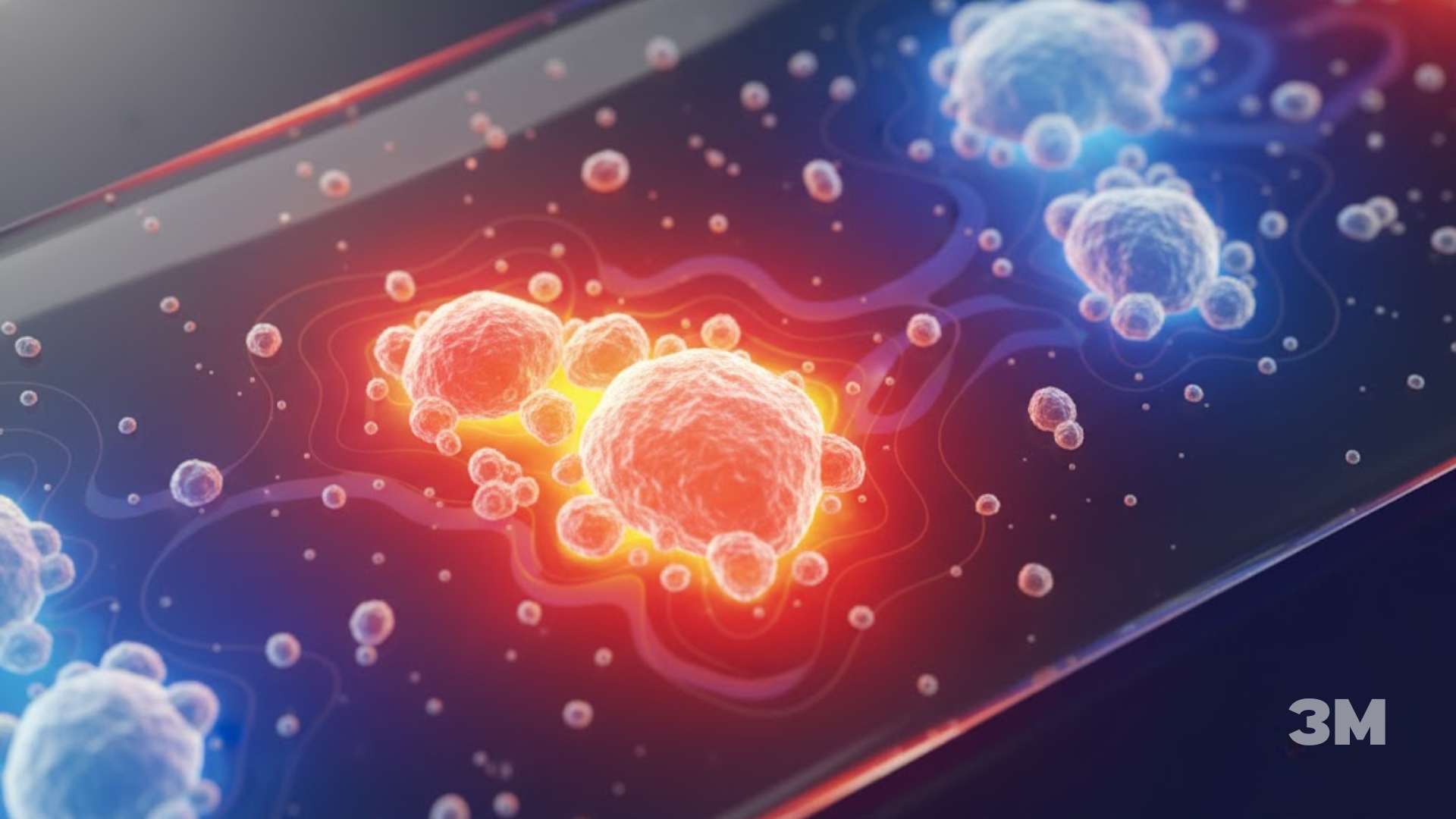
Ceramic Film (The “Best” / Premium Option)
This is the top-tier technology and the absolute best choice for a climate like ours. Instead of dye or metal, these films use non-conductive, non-metallic ceramic nanoparticles to absorb and reflect heat.
- Pros:
- Superior Heat Rejection: The best IR and heat rejection on the market.
- Crystal Clear: Can block massive amounts of heat while being virtually clear.
- No Signal Interference: Because there’s no metal, your cell phone and Wi-Fi will work perfectly.
- Extreme Durability: Ceramic films will not fade or turn purple.
- HOA-Friendly: Maintains the natural appearance of your windows without a mirror look.
This is the ultimate heat control window film solution. It’s the technology we recommend most often to our clients.
A Note on 3M™ Window Film: Our Brand of Choice
As a certified dealer, we have decades of experience with 3M window film products. 3M is an innovator in this space, and its Prestige Series is a perfect example of a premium ceramic-style film. It’s a “spectrally-selective” film, meaning it’s smart enough to let in the light you want (high VLT) while rejecting the parts of the spectrum you don’t (IR heat and UV rays). When you’re looking for the best 3m tint, you’re looking for this level of technology. It’s an investment, but the performance of a high-end 3m window tint is unmatched.
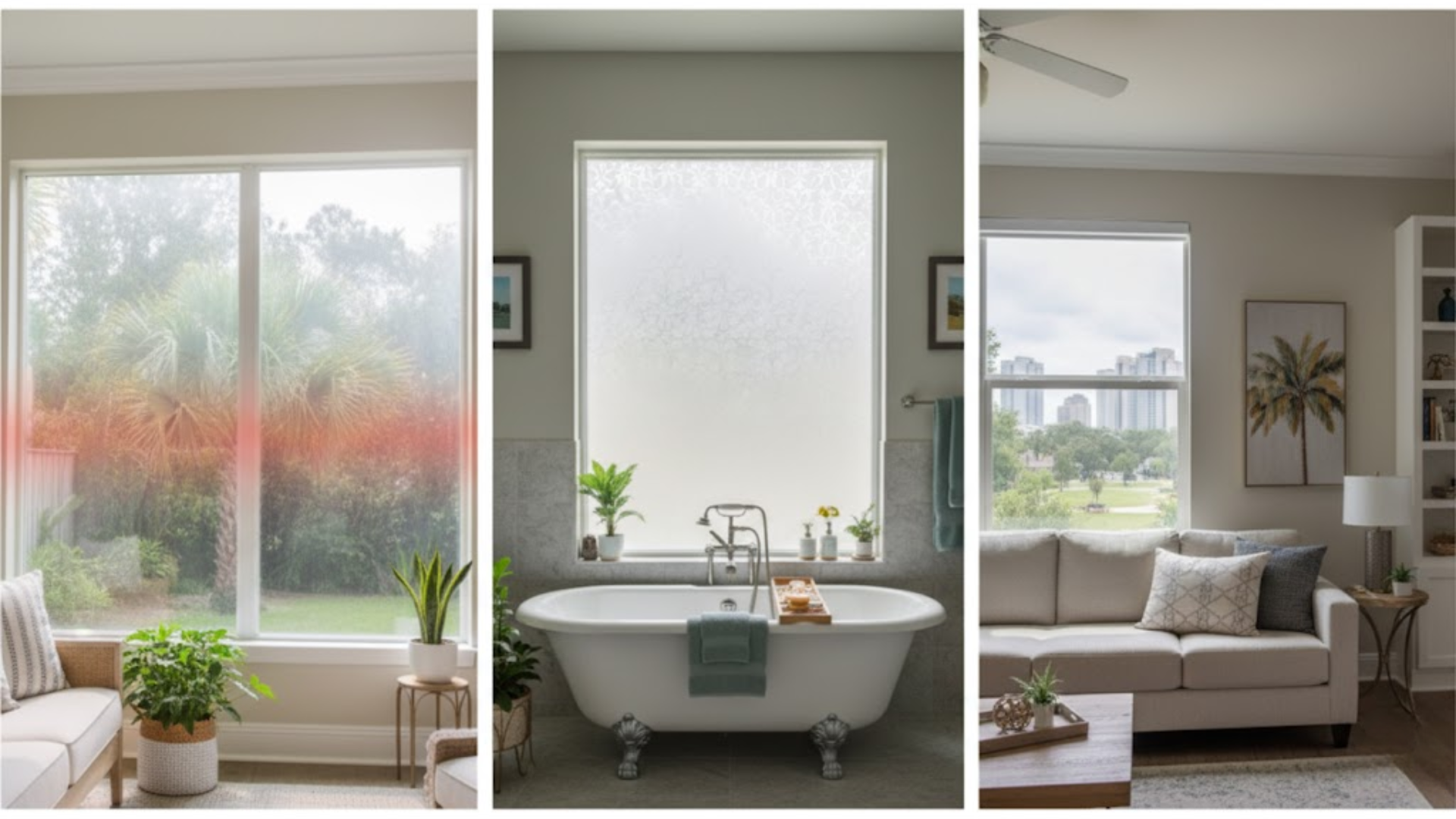
Matching the Film to Your Room’s Needs
Your home doesn’t need a one-size-fits-all solution. The best strategy is often to match the film to the room’s specific problem.
- For Blazing Hot Rooms (South/West Facing): This is where you put your money. Your sunroom, west-facing master bedroom, or living room with large picture windows needs a maximum-performance window film for heat. A low-SHGC ceramic film is the perfect solution.
- For Privacy (Bathrooms, Front Doors, Garages): Here, VLT and aesthetics are more important than heat. You can opt for a frosted, textured, or decorative window film for privacy. These films block all view while still letting in soft, diffused light.
- For Preserving Natural Light (Living Rooms, North Facing): If a room doesn’t get direct sun but you still want UV protection and some heat control, a high-VLT (clearer) ceramic film like the 3M window tint Prestige series is ideal. It protects your furniture without you even knowing it’s there.
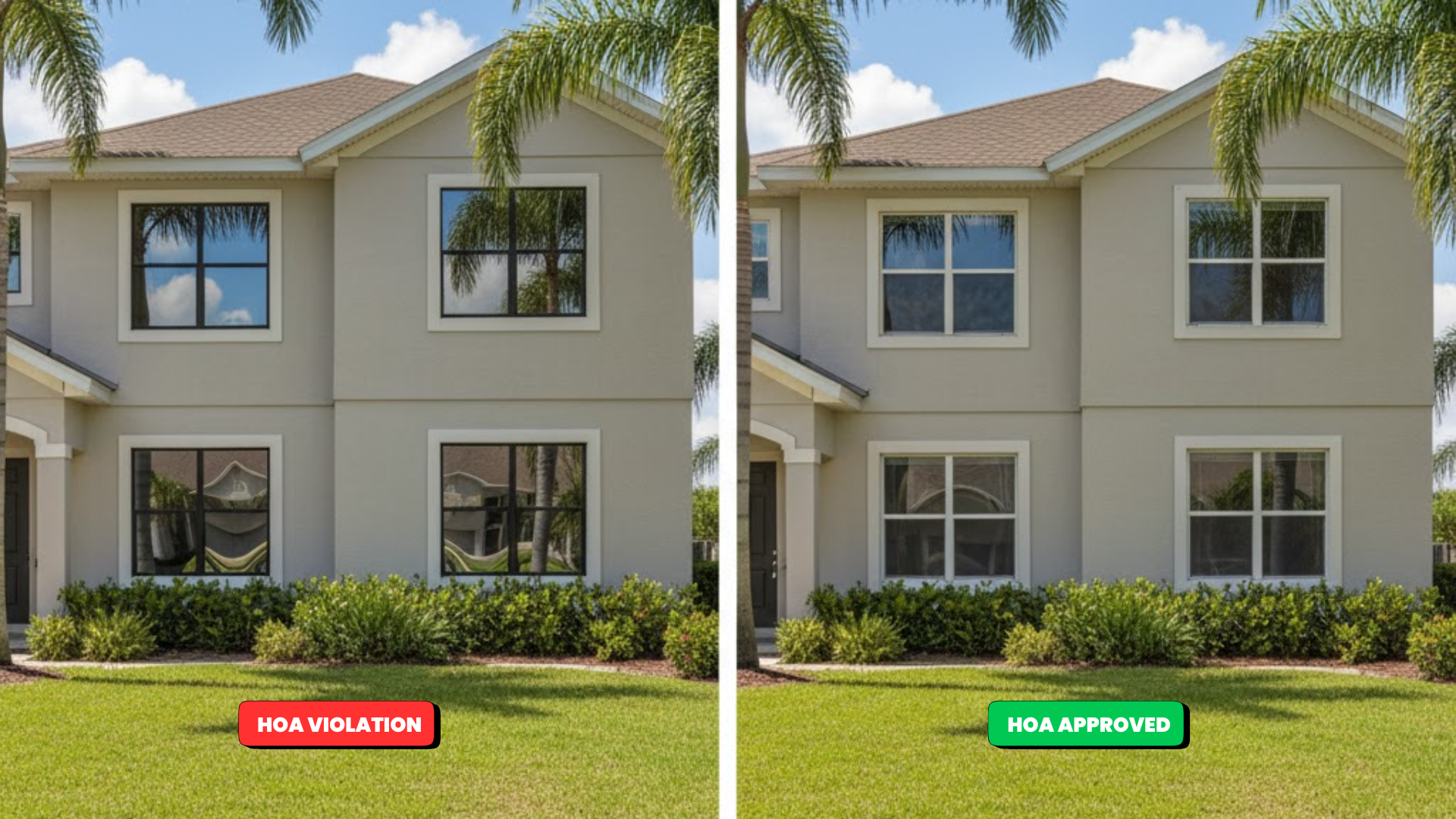
The Big Questions: Aesthetics, HOAs, and More
Here are the practical questions we get from Jacksonville homeowners every day.
Will My HOA Approve This? (A Critical Florida Question)
This is often the #1 concern, and it’s a valid one. Most HOAs have rules against “reflective” or “mirror-like” finishes. This is where metallic films get homeowners into trouble. Ceramic films are the solution. Because they are non-reflective, they maintain the natural “curb appeal” of your home and are almost always compliant with even the strictest HOA guidelines.
What About My Dual-Pane Windows?
Yes, you can (and should) apply film to dual-pane windows. However, this is one of the biggest reasons to use a professional. The wrong type of film (like a very dark, heat-absorbing film) can cause thermal stress and potentially damage the seal on a dual-pane unit. A professional installer knows exactly which films are “dual-pane safe” and will ensure your warranty is protected.
The Financial Side: Investment, Savings, and Incentives
A high-quality house window tinting project is an investment, not an expense. The long-term ROI in energy savings is significant, often paying for itself over time. But there’s an even more immediate benefit…
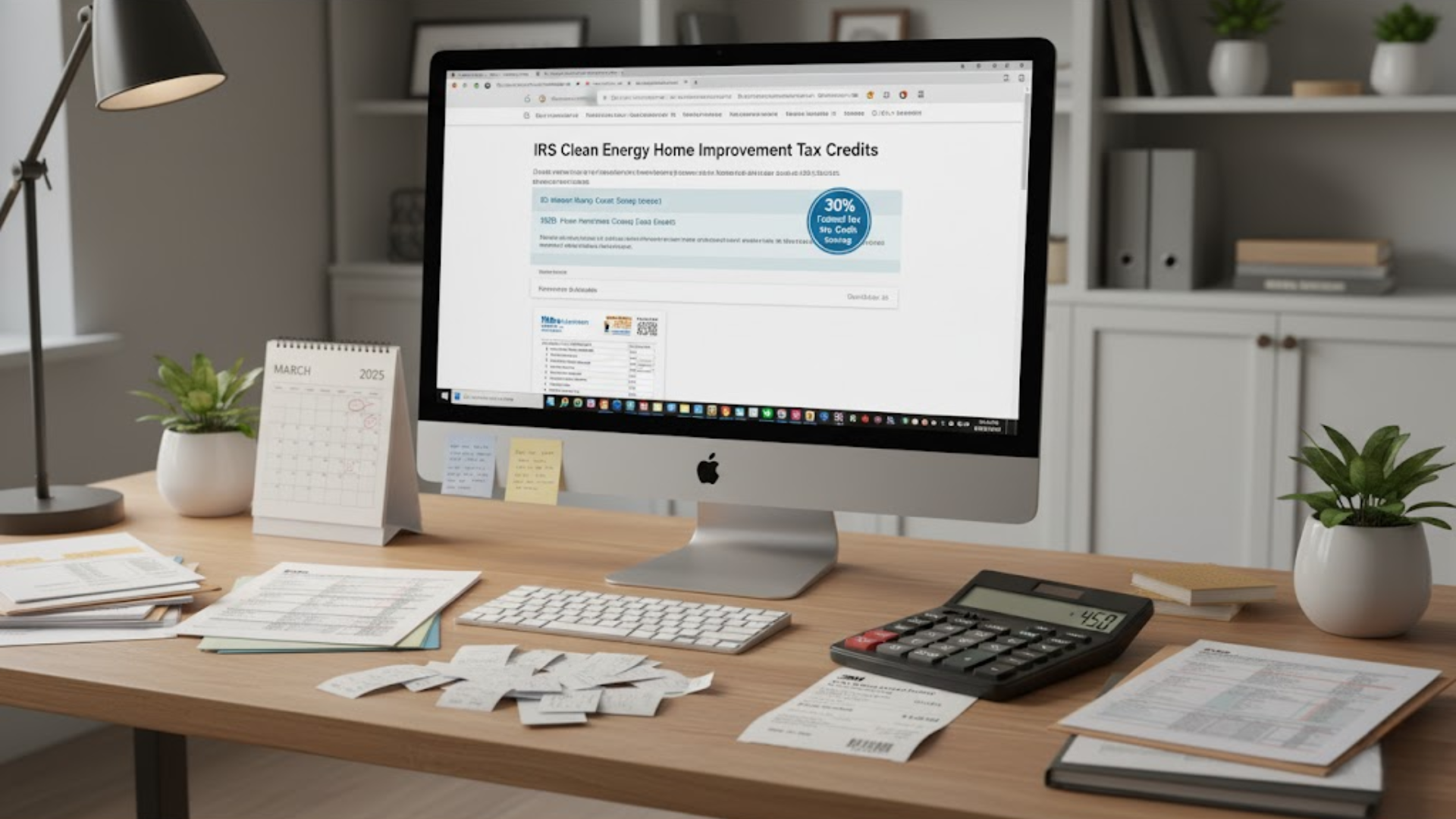
The 2025 Federal Tax Credit (Don’t Miss This!)
The Inflation Reduction Act reinstated a powerful tax credit for energy-efficient home improvements, and window film qualifies.
- The Benefit: You can get a tax credit for 30% of the cost of your qualified film installation, up to a maximum of $600 per year.
- What to do: This is a direct tax credit, not just a deduction. You must use a qualifying film (your installer will know which ones) and save your receipts for your tax professional. This is a fantastic incentive that makes the project even more affordable.
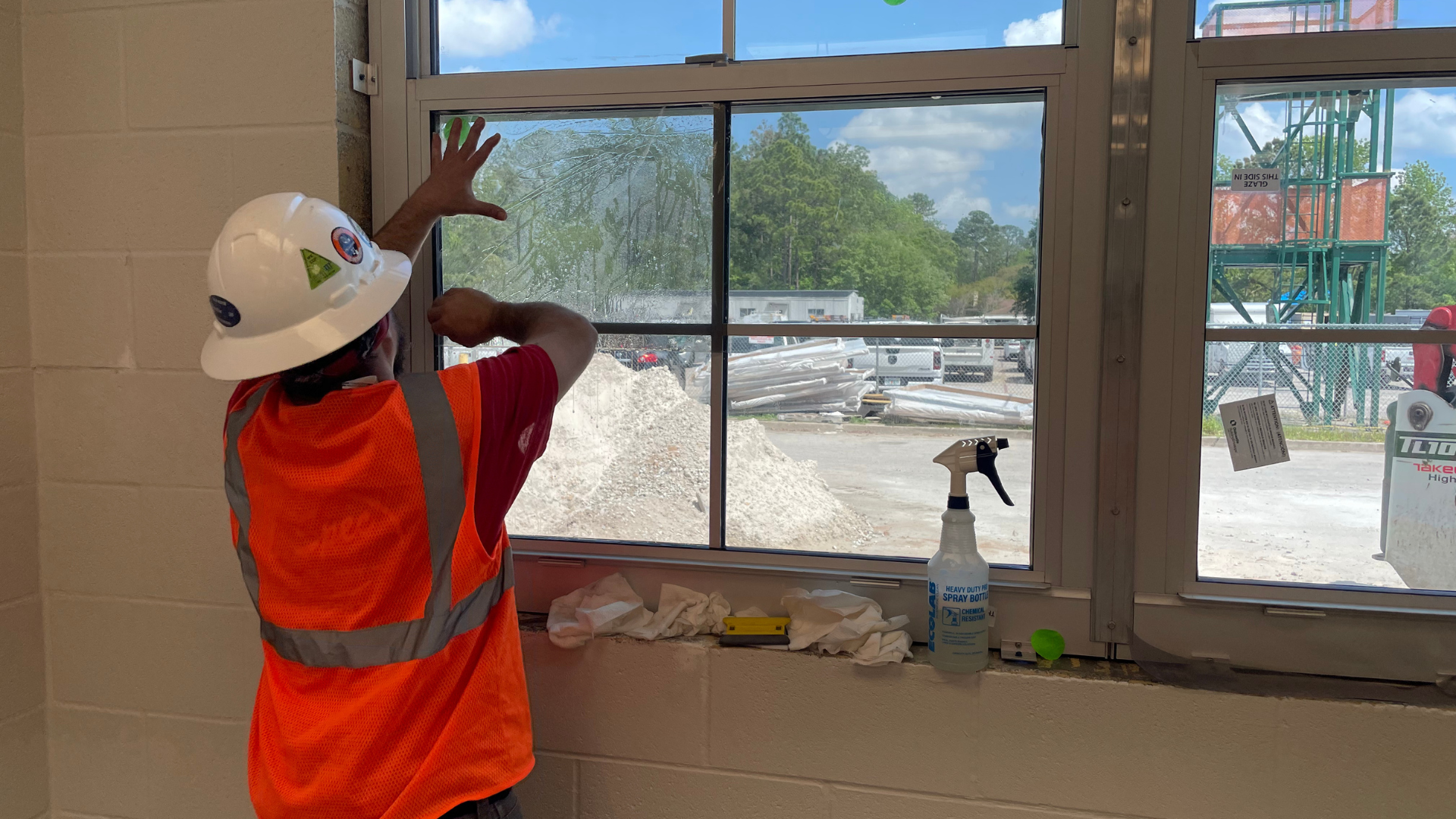
Why Professional Installation is the Only Way to Go
You can buy DIY kits online, but we are begging you to reconsider. For a climate like ours, professional installation is the only way to guarantee performance and longevity.
- The Problems with DIY: The process is extremely difficult. You’re working in a humid, dusty environment. The tiniest speck of dust or hair looks like a boulder under the film. You’ll likely end up with bubbles, creases, and peeling edges. The film in DIY kits is also lower-quality, and you have no warranty.
- The Professional Guarantee: A professional installer does this every day. We work in a clean, controlled manner, use computer-cut templates for a perfect fit, and have access to commercial-grade films (like 3M) that you cannot buy in a store. Most importantly, your installation is backed by a robust manufacturer’s warranty, often for the lifetime of your home.
This same expertise applies to businesses. When people search for “commercial window tinting near me,” they’re looking for the same guaranteed, high-performance results. The technology is the same, and the need for a flawless, professional application is just as critical.
Conclusion
Choosing the right window tint film for Jacksonville’s climate is a high-stakes decision, but it doesn’t have to be complicated. By ignoring the cheap, dyed films and focusing on the superior performance of a non-reflective ceramic film, you are already on the right track. By understanding the basics of SHGC and VLT, you can have an intelligent conversation with a professional.
The final, most important step is to partner with an expert you can trust. A free, in-home consultation is the best way to see the films for yourself, get your specific questions answered, and have a professional assess your home’s unique needs.
Ready to finally win the battle against the Florida sun? Contact All Spec Sun Control today for your free, no-obligation estimate.
FAQs
Q1. How long does window tint film last, especially in Florida?
Ans: This is a great question. Longevity depends heavily on the film quality and installation. In the intense Jacksonville sun, cheap, dyed films may only last 5-7 years before they bubble or turn purple. However, a high-quality, professionally installed ceramic film (like the 3M window film we use) is built to last. These premium films come with comprehensive warranties and can last 15-20 years or even a lifetime without fading or peeling.
Q2. Will window tint film kill my house plants?
Ans: It’s a common worry, but the answer is no. In fact, most house plants love tinted windows. The film cuts down on the harsh, direct solar energy that can scorch delicate leaves, creating a more stable, less intense light. It still allows plenty of the visible light spectrum through for photosynthesis. The UV window films also block ultraviolet light, which isn’t necessary for plant growth and can even be damaging.
Q3. Can I clean my windows after the film is installed?
Ans: Absolutely. You just need to wait a short period—typically 30 days—for the film to fully cure and bond to the glass. After that, cleaning is easy. The key is to avoid two things: ammonia-based cleaners (like standard Windex) and abrasive tools. Simply use a soft, clean microfiber cloth or rubber squeegee with a mild, ammonia-free cleaning solution.
Q4. Will window film make my house too dark?
Ans: This is the biggest myth in window tinting! While you can choose a dark window film for privacy, you don’t have to go dark to block heat. This is where modern ceramic technology shines. Films like the 3M tint Prestige Series are virtually clear (high VLT) but block an incredible amount of infrared heat. You can maintain your beautiful, bright, natural light while getting the maximum benefit of a heat-blocking window film.
Q5. Is window film a good alternative to replacing my windows?
Ans: For solar heat and UV protection, home window tint is not just a good alternative; it’s often a better one. A full window replacement is an incredibly expensive, disruptive, and lengthy project. A high-performance window tint film can be professionally installed in a single day for a fraction of the cost and can provide superior (or at least comparable) solar heat rejection and 99.9% UV protection. It’s one of the most cost-effective and high-impact energy upgrades you can make to your home.

